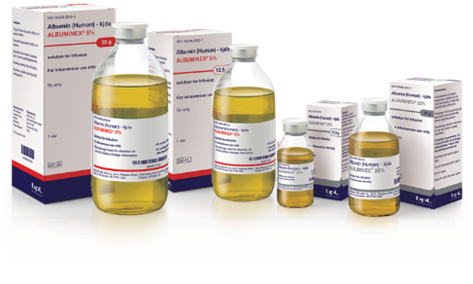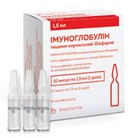
Medicinal products derived from human donor plasma are in demand in almost all branches of medicine. Blood products (albumin, immunoglobulin, coagulation factors) are used in the treatment of oncological, hematological, autoimmune, orphan, and other serious diseases.

Albumin is produced in the form of 5%, 10%, and 20% solutions. Albumin is indicated for various types of shock—traumatic, surgical, burn—as well as for edema caused by protein composition disorders of the blood, disorders of albumin synthesis in the liver, and significant loss of albumin (e.g., in liver cirrhosis, ascites, burns).

Plasma immunoglobulins have specific activity against infectious diseases. In clinical practice, normal human immunoglobulin is most widely used. The use of immunoglobulins is indicated for patients with chronic lymphocytic leukemia, hepatitis A and B, organ and bone marrow transplantation, HIV infection in children, multiple myeloma, chronic diseases of connective and nervous tissues, idiopathic thrombocytopenic purpura.
Hemostatic products include cryoprecipitate, prothrombin complex, fibrinogen, coagulation factors (FVII, FIX), which are used to treat patients with hemophilia, liver diseases, and massive bleeding.
What are the requirements to become a plasma donor?
A plasma donor can be a healthy person aged 18 to 60 years, weighing more than 50 kg, possessing a passport or identity card, and deemed fit for plasma donation based on their health condition. Exceptions include individuals with infectious and chronic diseases, carriers of blood-transmissible infections (hepatitis B, C, HIV, syphilis), patients with tuberculosis, cancer, allergies, skin, endocrine, and mental disorders.
How does the plasma donation process work?
The plasma donation procedure begins with a preliminary appointment, donor registration in the information system, filling out a questionnaire, medical examination, and clearance for plasma donation. After venipuncture, the plasma collection procedure takes an average of 35-40 minutes, followed by a 20-minute observation period where the donor is monitored by medical staff at the plasma center and provided with protein-rich food and drinks.
After plasma donation, donors should drink plenty of fluids, eat well, avoid physical exertion on the day of donation, keep the bandage on the venipuncture site for 2-4 hours, and avoid lifting heavy objects.
Contraindications for plasma donation
There are relative and absolute contraindications to plasma donation.
Relative or temporary contraindications to plasma donation include piercings, tattoos, endoscopy, acupuncture, tooth extraction, abortions, outpatient surgery, pregnancy and lactation, menstrual period, alcohol consumption, contact with HIV-infected individuals and hepatitis patients, vaccination, and others. People with relative contraindications can donate blood after a certain period.
Absolute contraindications for plasma donation include individuals with infectious and chronic diseases, carriers of blood-transmissible infections (hepatitis B, C, HIV, syphilis), and those with cancer, allergies, skin, endocrine, and mental disorders.
Being a plasma donor is very honorable and prestigious because you save lives. It is beneficial for health as plasma donors undergo medical examinations: blood pressure measurement, hemoglobin level testing, and screening for blood-transmissible infection markers.
Plasma donation positively affects the donor's body by renewing blood plasma, reducing the risk of vascular diseases (preventing strokes, heart attacks), which extends life expectancy. It also reduces the number of circulating immune complexes, which benefits people prone to allergic reactions.
